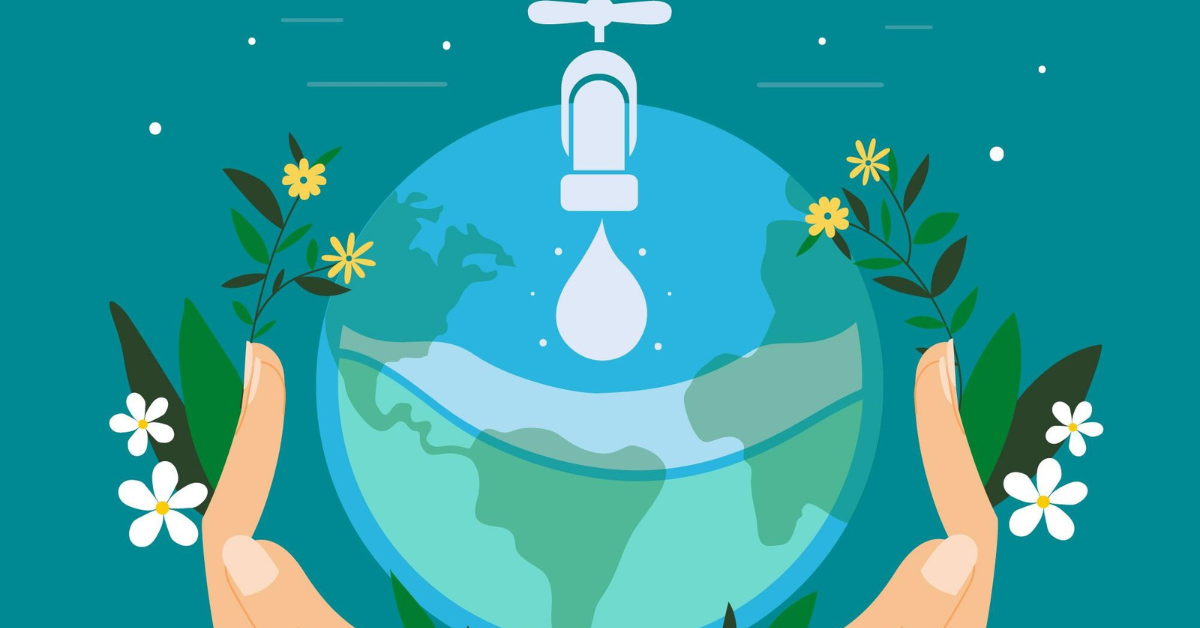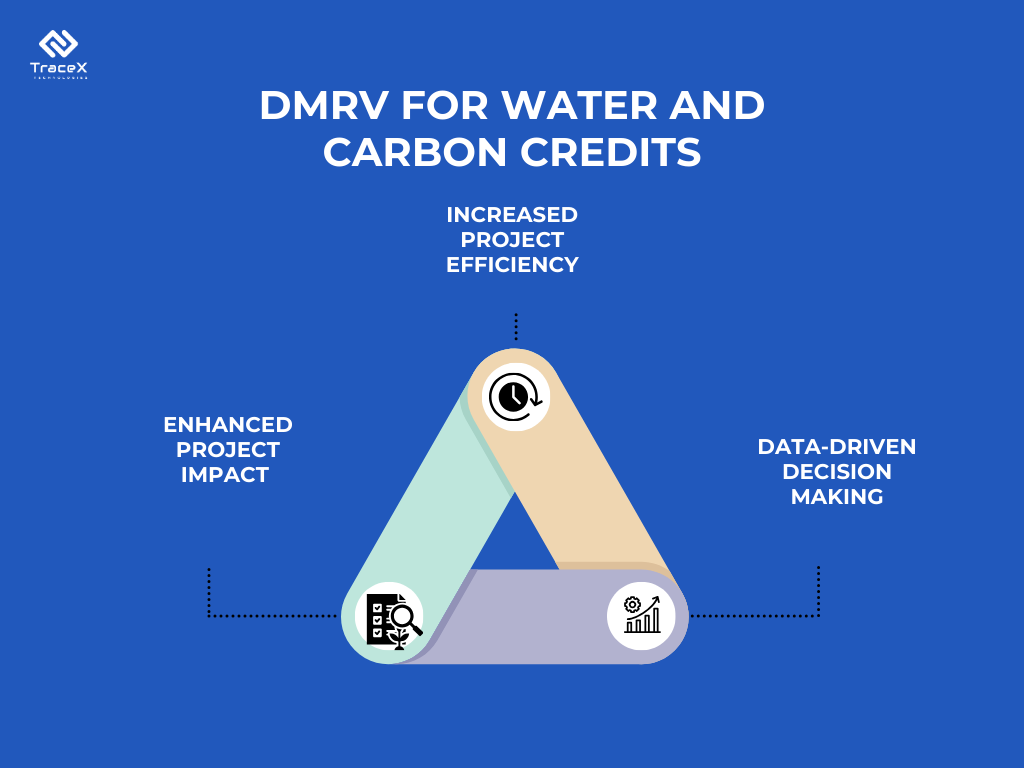Contact: +91 99725 24322 |
Menu
Menu
Quick summary: Unlock the surprising synergy! This blog dives into how carbon credits and water conservation join forces and ensure a sustainable future through water-efficient practices.

Do you know that Water conservation is your secret ally in cutting carbon emissions?
Our planet is facing a complex and interconnected crisis. Climate change, no longer a distant threat, is a present reality with far-reaching consequences. The urgency for action is undeniable, as rising global temperatures disrupt weather patterns, trigger extreme weather events, and disrupt ecosystems. However, climate change isn’t acting in isolation. It fuels another critical challenge: water scarcity
This interconnected web of challenges demands a multifaceted solution. We need to address climate change head-on, reducing greenhouse gas emissions and mitigating the worst effects of global warming. Simultaneously, we must find ways to conserve water and become more efficient in its use. The good news? There’s a path forward, and it lies in a surprising synergy: carbon credits and water conservation.
As temperatures climb, evaporation rates increase, leading to drier soils, shrinking rivers, and depleted aquifers. This intensifies competition for this vital resource, impacting agriculture, industry, and even our ability to generate clean energy
But the story doesn’t end there. The very activities that contribute to climate change, like burning fossil fuels, also exacerbate water scarcity. Energy production, industrial processes, and even traditional agricultural practices consume vast quantities of water. This creates a vicious cycle, where climate change makes water scarcer, and our efforts to meet our energy and food needs further deplete water resources.
Despite contributing the least to global carbon emissions, two billion people, primarily in developing nations, lack access to safe drinking water. Furthermore, four billion face water scarcity for at least a month each year, with this burden unevenly distributed across the globe. This water crisis is further complicated by its link to climate change.
Ironically, water management itself contributes 10% of global greenhouse gas emissions, mainly due to the energy required for water treatment and transportation.
The link between climate change and water scarcity is undeniable, with a chilling consequence for the global economy.
A recent report by the World Wildlife Fund warns that water insecurity could threaten a staggering 60% of global GDP, translating to $58 trillion.
While improved water management financing is crucial for addressing the lack of safe drinking water for billions globally, this approach creates a double-edged sword. Considering the existing significant carbon footprint associated with water management, the world needs innovative solutions for ensuring water access without further burdening the environment.
A significant amount of energy is used throughout the water cycle, from extraction and treatment to distribution and wastewater management. This reliance on energy, often from fossil fuels, leads to greenhouse gas emissions that contribute to climate change. Water conservation helps to reduce these emissions in several ways:
Agriculture is a major consumer of water, and traditional practices can be quite water intensive. However, several water-efficient agricultural practices can significantly reduce water use while simultaneously enhancing soil health and promoting carbon sequestration:
By embracing water-efficient agricultural practices, we can achieve a double win: mitigate climate change by reducing greenhouse gas emissions and ensure a more sustainable future for agriculture.
Climate change is a pressing global challenge, and reducing greenhouse gas emissions (GHGs), particularly carbon dioxide (CO2), is crucial. One innovative approach to tackling this issue is through carbon credits and their role in carbon offsetting. This section dives into these concepts and explores how agricultural practices can contribute by sequestering carbon in the soil and generating carbon credits.
Imagine a “currency” representing the right to emit a specific amount of CO2. A carbon credit signifies the removal or reduction of one metric ton of CO2 (or its equivalent in other GHGs) from the atmosphere. These credits are tradable instruments, allowing entities exceeding their emissions targets to purchase credits from others who have reduced their emissions or sequestered carbon.
Carbon offsetting refers to the practice of compensating for your own CO2 emissions by supporting projects that remove an equivalent amount from the atmosphere. This can be achieved through various methods, including:
The exciting news lies in the potential of agricultural practices to contribute to carbon offsetting through carbon sequestration, the process of capturing and storing atmospheric CO2 in soil and plant biomass. The integration of carbon markets and agricultural practices holds immense potential. As the demand for carbon offsets grows, farmers can benefit by generating carbon credits. This creates a financial incentive for adopting sustainable practices, promoting positive environmental and economic outcomes. However, challenges like robust carbon accounting and verification methodologies need to be addressed to ensure the credibility of agricultural carbon credits.
Traditionally, valuing and managing water has been a complex issue. Its unique characteristics – mobile, heavy, non-rivalrous, with diverse uses and fluctuating value based on location and time – have limited market solutions for water management.
While water challenges are often localized, climate finance mechanisms like the VCM offer a glimmer of hope. These mechanisms can provide recurring revenue streams, creating performance-based funding for safe water services globally. Essentially, private sector climate finance can be channelled towards funding reliable, sustainable, and affordable water supply systems.
Some stakeholders have proposed standalone water credits, separate from the carbon market. However, these haven’t yet gained significant traction and lacked a stable market. However, the emergence of methodologies for biodiversity credits might reveal the potential for parallel water crediting alongside carbon credits.
As companies become more transparent about their water footprints alongside their carbon footprints, there might be a rise in demand for standalone water credits. This could be driven by a desire to achieve “water neutral” or “water positive” targets, potentially within a company’s value chain through “insetting” projects that benefit both water and carbon reduction.
Two innovative approaches worth exploring involve quantifying, verifying, and monetizing water quality credits alongside carbon credits. This could create a more comprehensive market-based solution for tackling water insecurity.
The WASH (Water, Sanitation, and Hygiene) sector holds immense potential to contribute to climate action. By transitioning from traditional practices to more sustainable WASH solutions, significant reductions in greenhouse gas emissions are achievable.
There are two key mechanisms through which WASH projects can contribute:
Currently, most WASH projects engage in voluntary carbon markets (VCM) to monetize their positive environmental impact. These projects utilize established standards like the Gold Standard and VCS/Verra for verification and certification of their emission reductions.
Digital Monitoring, Reporting, and Verification (DMRV) platforms offer a suite of technological tools that can significantly address several challenges hindering the effectiveness of water projects in generating carbon credits

TraceX DMRV, a digital monitoring platform, empowers clean water projects by streamlining data collection, facilitating remote management, and ensuring adherence to carbon credit standards. This translates to smoother verification, increased project efficiency, and ultimately, a greater impact on climate change mitigation.
In conclusion, the fight against climate change demands innovative solutions that address interconnected challenges. The synergy between carbon credits and water conservation presents a powerful opportunity. By adopting water-efficient agricultural practices, farmers can generate carbon credits while conserving this vital resource. This approach not only benefits the environment but also empowers farmers to become active participants in climate action, improve their livelihoods, and contribute to a more sustainable future for our food systems. By fostering collaboration between stakeholders, embracing technological advancements, and overcoming existing hurdles, we can unlock the full potential of this approach and create a ripple effect of positive environmental and economic change.
